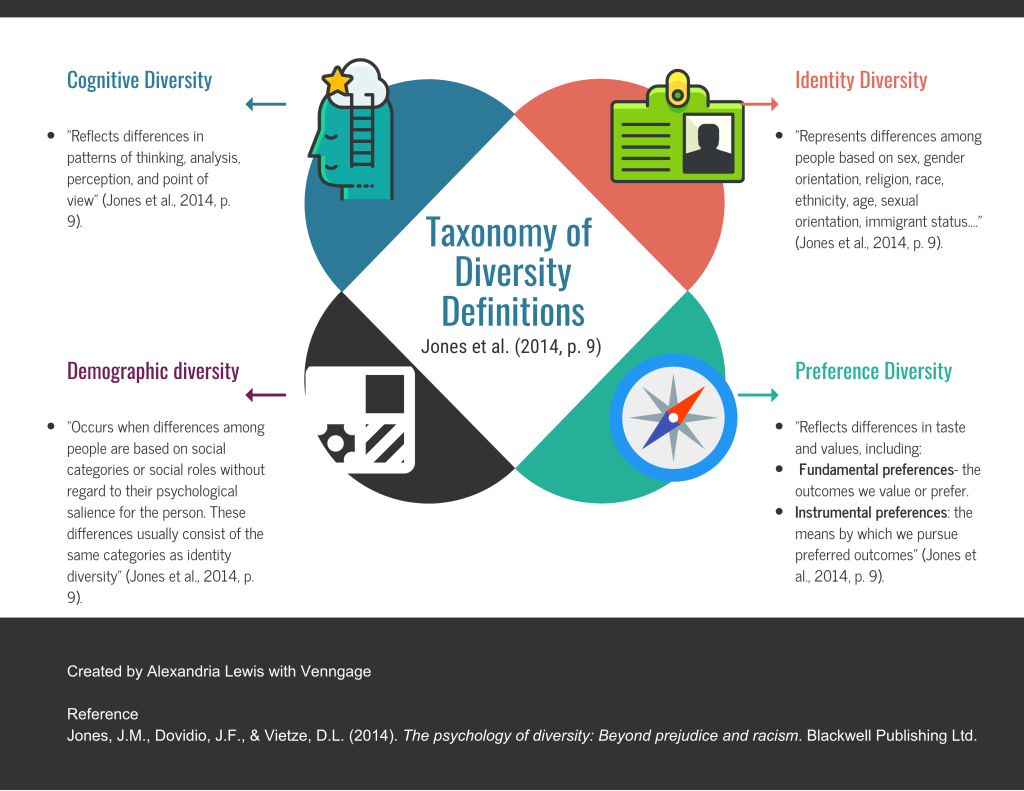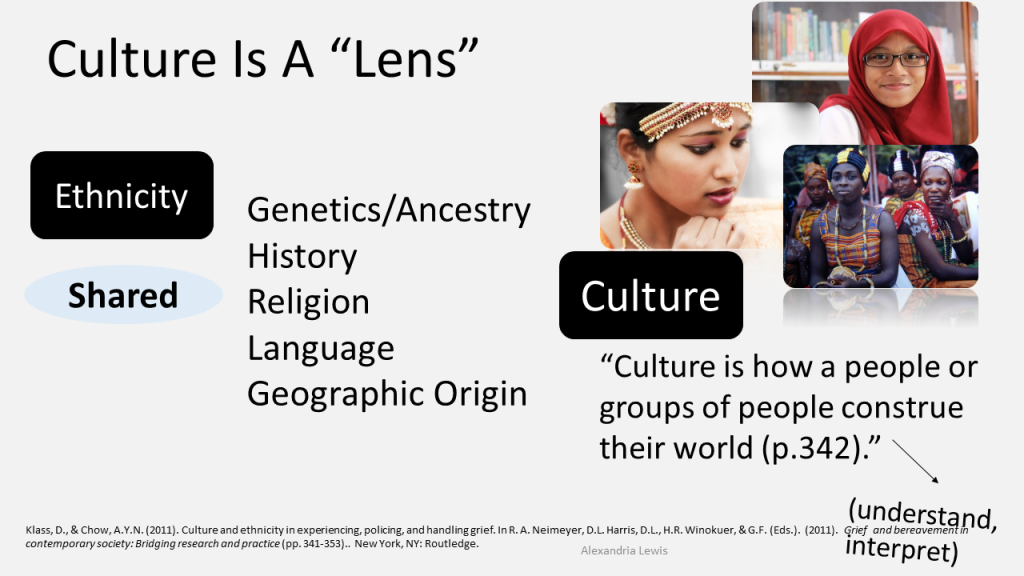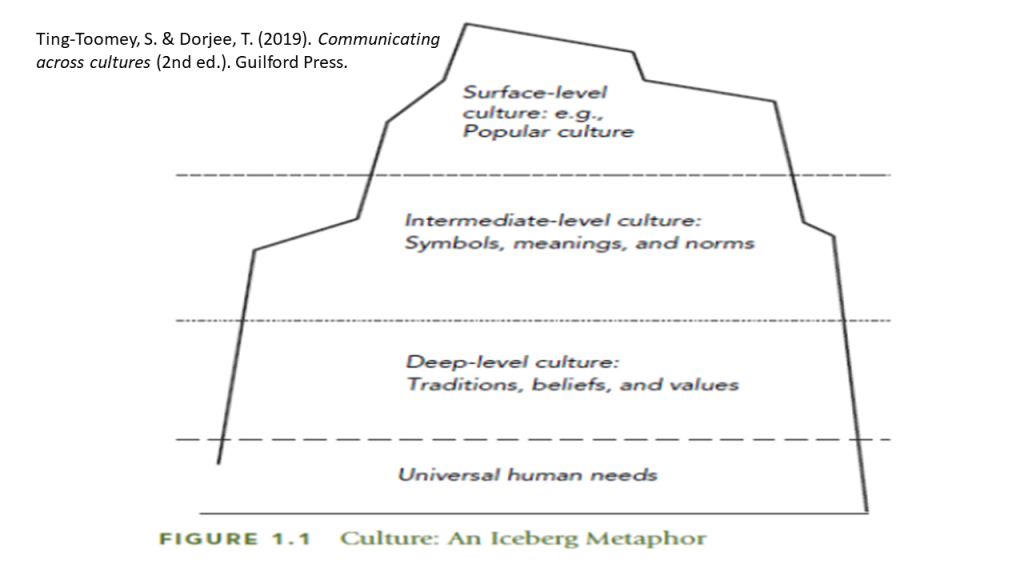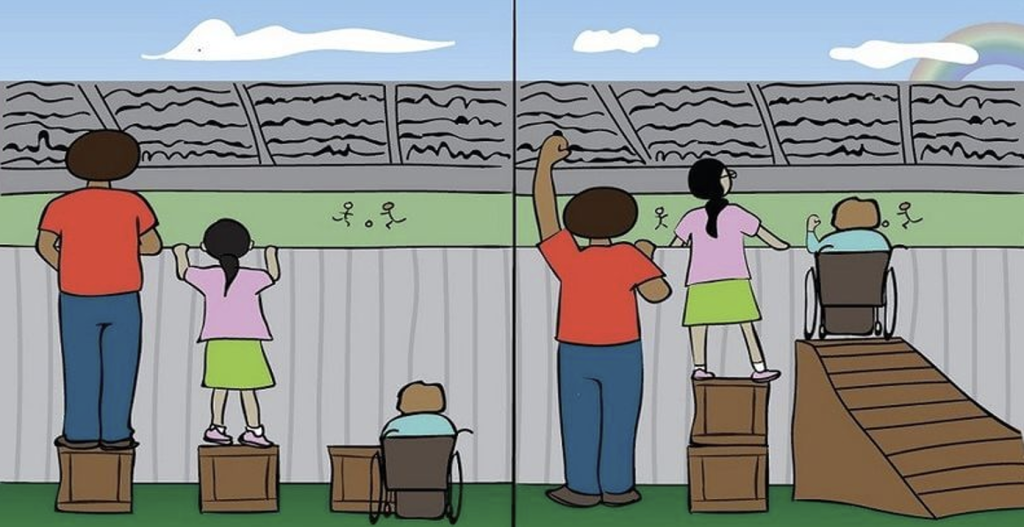33 Diversity, Social, Economic Justice, and Oppression
Alexandria Lewis

Content Outline, Competency, and KSAs
I. Human Development, Diversity, and Behavior in the Environment
IC. Concepts of Abuse and Neglect
KSAs:
– The effect of disability on biopsychosocial functioning throughout the lifespan
– The effect of culture, race, and ethnicity on behaviors, attitudes, and identity
– The effects of discrimination and stereotypes on behaviors, attitudes, and identity|
– The impact of transgender and transitioning process on behaviors, attitudes, identity, and relationships
– Systemic (institutionalized) discrimination (e.g., racism, sexism, ageism)
– The principles of culturally competent social work practice
– Sexual orientation concepts
– Gender and gender identity concept
– Social and economic justice
– The effect of poverty on individuals, families, groups, organizations, and communities
– The impact of social institutions on society
– Criminal justice systems
– The impact of globalization on clients/client systems (e.g., interrelatedness of systems, international integration, technology, environmental or financial crises, epidemics)
Some of these KSAs are covered in other chapters of this eBook.
overview
Definitions of Diversity
- Merriam-Webster:
- “The condition of having or being composed of differing elements.”
- “An instance of being composed of differing elements or qualities: an instance of being diverse.”
- Google dictionary:
- “the practice or quality of including or involving people from a range of different social and ethnic backgrounds and of different genders, sexual orientations, etc.”
- Jones et al. (2014):
- “…refers to those things that make us different from one another” (p. 4).
- “Fundamentally, diversity is about differences between and within individuals, institutions, and societies” (p. 6).
The word diversity is complex because the word has many layers. Page (2007, as cited in Jones et al., 2014) conceptualized four categories of diversity: cognitive diversity, identity diversity, demographic diversity, and preference diversity.

effect of disability on biopsychosocial functioning throughout the lifespan
“When thinking about how to define disability, it is helpful to make a distinction between a person’s impairment and a person’s disability. Impairment is a physiological condition that can lead to disability while disability is a result of people living with impairments when there are physical, attitudinal, communication, social, or other barriers in the environment.” -Elspeth Slayter and Lisa Johnson
Americans with Disabilities Act (ADA)
The ADA defines a protected individual with a disability as, “An individual with a disability is defined by the ADA as a person who has a physical or mental impairment that substantially limits one or more major life activities, a person who has a history or record of such an impairment, or a person who is perceived by others as having such an impairment” (U.S. Department of Justice, Section: Americans with Disabilities Act, 2020).
Source: U.S. Department of Justice. (2020, February 28). Guide to disability rights laws. https://www.ada.gov/resources/effective-communication/
The effect of disability on biopsychosocial functioning throughout a person’s lifespan is a complex and multidimensional issue, impacting various aspects of an individual’s life:
- Biological: Disabilities can impact an individual’s physical health (e.g., mobility limitations, chronic pain).
- Psychological: Additional impacts include mental health due to coping with stigma, discrimination, and/or the chronic nature of some disabilities.
- Social: Disabilities can affect social functioning and relationships. This includes barriers to social inclusion, communication challenges, and difficulties in forming and maintaining relationships. Also, individuals with disabilities might encounter obstacles in accessing social supports and community resources.
- Developmental Considerations: The impact of a disability varies throughout the lifespan and can influence key developmental milestones. In children, it may affect learning and education, social integration, and family dynamics. Adults may face challenges in employment, independence, and social roles. Older adults with disabilities might encounter additional barriers related to aging, such as increased health problems and social isolation.
- Environmental Factors: The environment plays an essential role in the functioning of individuals with disabilities. Building accessibility, availability of adaptive technologies, and supportive policies can enhance independence and participation in society. Conversely, barriers in the environment can significantly restrict their opportunities.
- Societal and Economic Justice: Disabilities often intersect with issues of social and economic justice. Individuals with disabilities can face systemic discrimination, employment disparities, and reduced access to healthcare and education.
- Family Dynamics: Families may require support in navigating healthcare systems, advocating for educational accommodations, and managing the emotional and financial stresses associated with care.
Exam Tips:
- Consider answer choices that foster empowerment, self-determination, autonomy, resilience, and well-being.
- Disabilities can intersect with various cultural, social, and economic factors. Consider the client’s background in the vignette and how cultural attitudes towards disability might influence their experience and needs.
effects of culture, race, and ethnicity on behaviors, attitudes, and identity
Culture is a lens people use to see the world— cultural experiences shape worldviews.

. Ting-Toomey and Dorjee (2019) referred to culture as “an enigma. It contains both concrete and abstract components” (p. 14). Ting-Toomey and Dorjee (2019) presented the following visual of culture as an iceberg in their book about communicating across cultures.

There are multiple dimensions of human identity (Sue et al., 2019): Gender, socioeconomic status, age, geographic location, ethnicity, disability, culture, religious preference, marital status, sexual orientation, and race.
Racial identity and ethnic identity are sometimes used interchangeably. Ethnic identity development from the research literature differs from racial identity development research. The focus of racial identity is oppression and racism, whereas the focus of ethnic identity is one’s shared sense of identity/connection with others. Phinney and Ong (2007) defined ethnic identity as: “a sense of peoplehood within a group, a culture, and a particular setting” (p. 271). The psychological study of ethnic identity is informed by Erik Erikson’s psychosocial stages, with identity as a process.
Resource: Summary of Stages of Racial Identity Development
The effects of discrimination and stereotypes on behaviors, attitudes, and identity
Discrimination can impact a person’s overall well-being and mental health, including depression, post-traumatic stress, and anxiety. The stress from discrimination can have adverse effects on physical health, such as hypertension and other stress-related illnesses.
Adverse health effects of racism, not race itself, are tied to disease risk. Other minoritized groups, such as Hispanic, American Indian and Asian people, or those experiencing adverse social factors such as unstable housing, face health disparities for the same reasons. – Keith Churchwell, M.D., and Sadiya S. Khan, M.D., M.P.H.
From an environmental lens, discrimination limits access to opportunities, leading to disparities in education, employment, and socioeconomic opportunities. Some individuals cope with discrimination by avoiding situations where they anticipate discrimination, which leads to isolation and disparities in opportunities.
Effects on attitudes include some of the following:
- Internalized negative beliefs (i.e., internalized stereotypes, resulting in low self-esteem and self-worth)
- Mistrust (i.e., mistrust toward groups, organizations, institutions, or society at large, impacting interpersonal relationships and ability to receive support).
- Resilience (i.e., some individuals develop resilience and a strong sense of identity in opposition to discriminatory attitudes, fostering advocacy and activism).
Effects on identity:
- Identity confusion (i.e., discrimination can cause confusion or conflict in one’s identity, especially during critical developmental periods such as adolescence).
- Strengthened group identity (i.e., discrimination can strengthen solidarity and identification with a marginalized group, fostering a collective identity and support network).
- Hidden identity (i.e., some people hide an identity as a way to cope from societal rejection)
Systemic discrimination (e.g., racism, sexism, ageism)
Systemic Discrimination Definition: Policies, practices, and procedures that create barriers/inequities for certain groups of people, embedded within the structures of society (i.e., racism, sexism, ageism, ableism, homophobia, and other forms of discrimination that are embedded in societal institutions such as education, healthcare, employment, and the legal system).
The Principles of culturally competent social work practice
NASW Ethical Standards 1.05 Cultural Competence
“(a) Social workers should demonstrate understanding of culture and its function in human behavior and society, recognizing the strengths that exist in all cultures.
(b) Social workers should demonstrate knowledge that guides practice with clients of various cultures and be able to demonstrate skills in the provision of culturally informed services that empower marginalized individuals and groups. Social workers must take action against oppression, racism, discrimination, and inequities and acknowledge personal privilege.
(c) Social workers should demonstrate awareness and cultural humility by engaging in critical self-reflection (understanding their own bias and engaging in self-correction), recognizing clients as experts of their own culture, committing to lifelong learning, and holding institutions accountable for advancing cultural humility.
(d) Social workers should obtain education about and demonstrate understanding of the nature of social diversity and oppression with respect to race, ethnicity, national origin, color, sex, sexual orientation, gender identity or expression, age, marital status, political belief, religion, immigration status, and mental or physical ability.
(e) Social workers who provide electronic social work services should be aware of cultural and socioeconomic differences among clients’ use of and access to electronic technology and seek to prevent such potential barriers. Social workers should assess cultural, environmental, economic, mental or physical ability, linguistic, and other issues that may affect the delivery or use of these services” (Source: NASW Code of Ethics 1.05)
The NASW Standards and Indicators for Cultural Competence in Social Work Practice brochure defines culture as “Culture includes, but is not limited to, history, traditions, values, family systems, and artistic expressions of client groups served in the different cultures related to race and ethnicity, immigration and refugee status, tribal status, religion and spirituality, sexual orientation, gender identity and expression, social class, and abilities.”
Council on Social Work Education Competency 2: Advance Human Rights and Social, Racial, Economic, and Environmental Justice:
- “Social workers understand that every person regardless of position in society has fundamental human rights. Social workers are knowledgeable about the global intersecting and ongoing injustices throughout history that result in oppression and racism, including social work’s role and response Social workers critically evaluate the distribution of power and privilege in society in order to promote social, racial, economic, and environmental justice by reducing inequities and ensuring dignity and respect for all. Social workers advocate for and engage in strategies to eliminate oppressive structural barriers to ensure that social resources, rights, and responsibilities are distributed equitably and that civil, political, economic, social, and cultural human rights are protected” (Council on Social Work Education [CSWE], 2022, p. 9).
social and economic justice
Social justice is one of the core social work values:
- “Social workers pursue social change, particularly with and on behalf of vulnerable and oppressed individuals and groups of people. Social workers’ social change efforts are focused primarily on issues of poverty, unemployment, discrimination, and other forms of social injustice. These activities seek to promote sensitivity to and knowledge about oppression and cultural and ethnic diversity. Social workers strive to ensure access to needed information, services, and resources; equality of opportunity; and meaningful participation in decision making for all people” (NASW, 2017, p.5).
What is social justice? Is there just one definition? There are various approaches and perspectives on social justice. Perspectives include (but not limited to): utilitarian, libertarian, egalitarian, racial contract, and human rights (Austin, Branom, & King, 2014). Other perspectives include needs-based and merit-based. Some approaches do not fit all circumstances. According to Accomazzo (2014), “the code does not include a definition of social justice, leaving practitioners and educators to create their own meaning for the term” (p. 55).
Equity vs. Equality: Equity involves providing resources and opportunities according to individual needs and circumstances, whereas equality means treating
everyone the same regardless of their differences and/or needs.

Examples of economic justice issues include (but not limited to):
- Living wages
- Disparities in income and wealth
- Fair labor practices
- Affordable healthcare
- Affordable housing
- Financial literacy
Practical Application:
- Policy Advocacy: Social workers should advocate for and support policies that aim to reduce poverty, inequality, and discrimination. This can involve engaging in legislative advocacy, participating in community organizing, and working with coalitions.
- Community Development: Implementing and supporting community-based programs that address social and economic inequalities, such as affordable housing initiatives, job training programs, and access to healthcare.
- Ethical Practice: Ensure that social work practice is guided by ethical principles that promote social and economic justice, including respect for the dignity and worth of individuals, the importance of human relationships, and the pursuit of social change.
The effect of poverty on individuals, families, groups, organizations, and communities
Poverty can be tied to systemic issues, including access to education, job opportunities, and access to housing. Poverty can be cyclical, affecting multiple generations within a family or community. Living in poverty can impact education, employment, housing, physical health, mental health, and social relationships.
Effect on Individuals:
- Health (physical/mental): Increased risk of mortality due to lack of healthcare access, nutritious foods, and safe living conditions. Financial stress can also effect physical health and mental health.
- Self-esteem and identity: Individuals might feel hopeless and helpless due to their circumstances and societal barriers.
Effects on Families:
- Family stress as a system, including financial stressors and conflicts.
- Parental stressors/challenges.
Effects on Groups and Communities:
- Social cohesion issues, which impacts trust and social bonds in communities.
- Lack of community resources, such as healthcare, education, and public services.
- Lack of economic development and jobs that pay a living wage.
While individuals, groups, families, and communities can face negative effects of poverty, it is essential to consider empowerment, resilience, and strengths.
criminal justice
Social Work Roles:
- Advocate for access to resources, fair treatment, and protection of rights.
- Rehabilitation and reintegration programs.
- Support services.
- Restorative justice.
Ethical Issues:
- Criminal legal system problems, such as systemic issues: racial disparities, socioeconomic factors, mass incarceration, solitary confinement, lack of access to mental and physical health services, etc.
impact of globalization on clients/client systems (e.g., interrelatedness of
systems, international integration, technology, environmental or financial crises,
epidemics)
Globalization Defined:
- “Refers to the international integration of all processes associated with economic production, distribution, and consumption” (Estes, n.d., p. 11).
- “A process of global integration in which diverse peoples, economies, cultures and political processes are increasingly subjected to international influences” (Midgley, 1997, p. xi, as cited in Estes, n.d., p.12 ).
Consider the systems theory in globalization whereby global systems are connected; change in one part of the system can effect other systems. Global events can affect local communities. For example, a financial crisis in one country can lead to job losses in another due to global trade connections. Another example is supply chain issues that can impact the ability to locate certain products due to supply issues in other countries.
Globalization Examples:
- Public Health
- Pandemics and epidemics.
- During the COVID-19 pandemic, social workers in various countries facilitated access to health services, coordinated food and housing assistance, and supported mental health through virtual counseling sessions.
- Pandemics and epidemics.
- Migration, immigration, and displacement.
- Examples:
- Civil wars in countries displace individuals, groups, families, and communities. Some individuals and families seek asylum in other countries. There are organizations in the U.S. that provide financial, education, employment, integration, and mental health support.
- Coastal communities in some countries experience a rise in sea levels. Social workers assist in resettlement efforts and advocate for sustainable environmental policies.
- Examples:
- Economic Instability:
- Example: A U.S. rural community that experiences the relocation of factories to other countries (e.g., China, Mexico) will result in financial hardships at the individual, group, and community levels.
- Technology:
- Example: In rural areas of developing countries, limited internet access restricts educational opportunities. Social workers create programs to provide offline educational resources and advocate for improved infrastructure.
- Financial Crises:
- Example: Financial crises like the 2008 global recession had widespread impacts, including foreclosures, job losses, and increased demand for social services.
Exam questions may focus on how global events, such as economic crises, environmental changes, or technological advancements, affect local communities and individual clients. Think about how different systems (e.g., economic, social, environmental) interact and influence each other. For instance, a question might describe a natural disaster and ask how it impacts various systems, such as healthcare, housing, and community support. If a question involves supporting refugees from a conflict-affected area, recall strategies such as providing mental health support, facilitating integration programs, and coordinating with international aid organizations.
Exam Tips
There have been prior questions on the ASWB exams that included questions with microaggressions (Castex et al., 2019). Castex et al. (2019) noted a practice exam question with coded language and stereotypes, reinforcing biased descriptions:
- A social worker is a member of a team of planners hired by an inner-city revitalization agency. The team’s assignment is to improve living conditions in
a deteriorated neighborhood that was once a thriving community. The area is now characterized by high crime rates and drug traffic. Those living in the neighborhood are intimidated and fearful. In adhering to the concept of social justice, what should the social worker do in a meeting with the residents? (ASWB, 2010, p. 41, as cited in Castex et al., 2019, p. 220)
According to the ASWB (2022), they provide the following guidance for item writers: “Be sure to consider whether the specific culture matters to the skill that a social worker use” (p. 15). This approach reflects a change from older exams.
Key Takeaways When Answering Exam Questions
- Watch for any answer choices on the exam that might read as stereotypical.
- Remember that all social workers have biases. Some questions regarding diversity might connect to self-awareness, cultural humility, etc.
- Look for answers that show how skills can be effective across different cultural backgrounds.
- Reflect on the ethical implications of different interventions and select those that align with the core values and ethical standards of the social work profession.
- Look for answers that provide practical and sustainable solutions to social and economic injustices, rather than temporary or superficial fixes.
- Remember that the social worker is not the expert on the experiences of individuals, groups, and communities.
- Choose options that empower clients and communities, promoting their ability to advocate for themselves and access necessary resources and opportunities.
- When presented with scenarios involving social and economic injustices, look for answers that address the root causes of inequality, such as systemic barriers and discriminatory practices.
References
Accomazzo S. (2014). Historical perspectives on social justice. In M.J. Austin (Ed.), Social justice and social work: Rediscovering a core value of the profession (pp. 55-64). SAGE Publications, Inc.
Association of Social Work Boards. (2022). Item writing guide for educators. Author.
Austin, M.J., Branom, C., & King, B. (2014). Searching for the meaning of social justice. In M.J. Austin (Ed.), Social justice and social work: Rediscovering a core value of the profession (pp. 1-17). SAGE Publications, Inc.
Castex, G., Senreich, E., Phillips, N. K., Miller, C. M., & Mazza, C. (2019). Microaggressions and racial privilege within the social work profession: The social work licensing examinations. Journal of Ethnic & Cultural Diversity in Social Work, 28(2), 211-231. https://doi.org/10.1080/15313204.2018.1555498
Council on Social Work Education. (2022). Educational policy and accreditation standards for baccalaureate and master’s social work programs. https://www.cswe.org/getmedia/bb5d8afe-7680-42dc-a332-a6e6103f4998/2022-EPAS.pdf
Estes, R.J. (n.d.). United States-based conceptualization of international social work education. https://www.cswe.org › social-work-resources
Jones, J.M., Dovidio, J.F., & Vietze, D.L. (2014). The psychology of diversity: Beyond prejudice and racism. Blackwell Publishing Ltd.
Klass, D., & Chow, A.Y.N. (2011). Culture and ethnicity in experiencing, policing, and handling grief. In R.A. Neimeyer, D.L. Harris, H.R. Winokuer, & G.F. Thornton (Eds.). Grief and bereavement in contemporary society: Bridging research and practice (pp. 341-353). Routledge.
National Association of Social Workers. (n.d.). NASW code of ethics. https://www.socialworkers.org/About/Ethics
Phinney, J. S., & Ong, A. D. (2007). Conceptualization and measurement of ethnic identity: Current status and future directions. Journal of Counseling Psychology, 54(3), 271-281. https://doi:10.1037/0022-0167.54.3.271
Sue, D.W., Sue, D., Neville, H.A., & Smith, L. (2019). Counseling the culturally diverse: Theory and practice (8th ed.). John Wiley & Sons, Inc.
Ting-Toomey, S., & Dorjee, T. (2019). Communicating across cultures (2nd ed.). Guilford Press.

